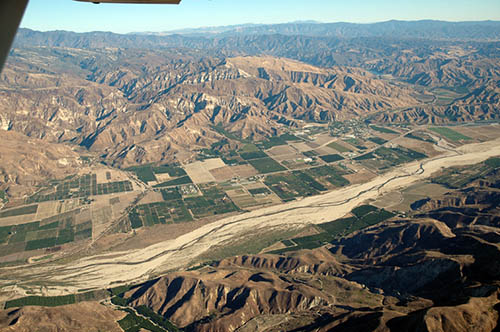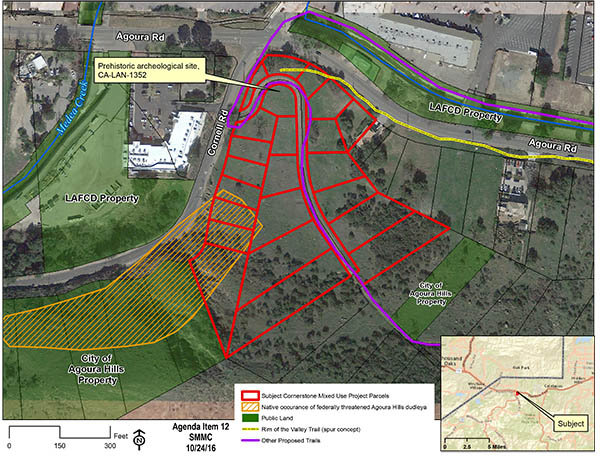Representative Cases
Newhall Ranch

A portion of the Santa Clara River, showing the river channel, with agriculture in the remainder of the floodplain. Photo by Bruce Perry, Department of Geological Sciences, CSU Long Beach. Used with permission.
Advocates for the Environment represented environmental NGO plaintiffs in two important cases challenging the first two phases of Newhall Ranch, a huge housing development in and along the Santa Clara River. Dean Wallraff, our Executive Director, was lead attorney on these cases.
The Newhall Ranch litigation resulted in a huge climate victory: the largest housing project ever approved in California was forced to have net-zero GHG emissions.The California Supreme Court ruled in favor of environmental plaintiff NGOs in a related case, Center for Biological Diversity v. California Dept. of Fish and Wildlife (2015) 62 Cal.4th 204. That case invalidated the previous Environmental Impact Reports for Newhall Ranch, reports which concluded that the project did not have significant greenhouse-gas emissions.
Edge Sweetwater Mesa
On March 21, 2019, the California Court of Appeal ruled in favor of the Sierra Club in the Club's lawsuit against the California Coastal Commission challenging the coastal development permits the Commission issued in 2015 for the Sweetwater Mesa Development in the Santa Monica Mountains north of Los Angeles. Advocates for the Environment represented the Sierra Club in the lawsuit. Following the issuance of the Court of Appeal opinion, the Edge's lawyers sought review of the case in the California Supreme Court, which denied review on June 12, 2019. This denial provided a definitive end to the case.
The project was the brainchild of David Evans, aka "The Edge," the lead guitarist of the rock group U2. The Sierra Club opposed the 155-acre development located in the middle of a large open-space area in the Santa Monica Mountains situated between parkland managed by the National Park Service and the California Department of Parks and Recreation.
The proposed project included five luxury mansions, each close to 10,000 square feet plus swimming pools, garages, etc., on a prominent ridge in full view of many locations around the Santa Monica Mountains. The project would have had an outsized environmental impact. The access road would have been a huge engineering project: almost half a mile long, requiring 168 reinforced concrete caissons, with an average diameter of 50 inches and an average depth of 56 feet. The road would have needed protection from almost a thousand feet of retaining walls and “stabilization devices,” due to the extreme instability of the hillsides. The water line, 8 inches in diameter, would have been a mile and a quarter long, and would have run under other properties in the mountains. The project would be highly visible from numerous locations around the Santa Monica Mountains and would encourage more development, by bringing infrastructure into an area that should be preserved as open space. The project is stopped now.
Cornerstone
Advocates for the Environment, representing a local citizen's group and the California Native Plant Society, stopped the Cornerstone Project in Agoura Hills, California by winning a lawsuit under the California Environmental Quality Act (CEQA) against the City of Agoura Hills.

Map of the area surrounding the Cornerstone project, showing the Project's intrusion into dudleya habit, a prehistoric archaeological site, and planned hiking trails.
An out-of-state developer wanted to construct 35 dwelling units and almost 70,000 square feet of commercial space and over 100,000 square feet of parking lot on a parcel at the corner of Agoura Road and Cornell Road in the City of Agoura Hills. The land is currently vegetated with native sage scrub and coastal oak wildlands. The site, which Los Angeles County designated as part of a Significant Ecological Area before it was annexed into Agoura Hills, hosts 59 oak trees. Twenty-nine of these would be removed for the project, and the remainder would be encroached upon to the point where their long-term survival is questionable. The site also contained a substantial buried trove of Native American artifacts, which the development would have encroached on.
